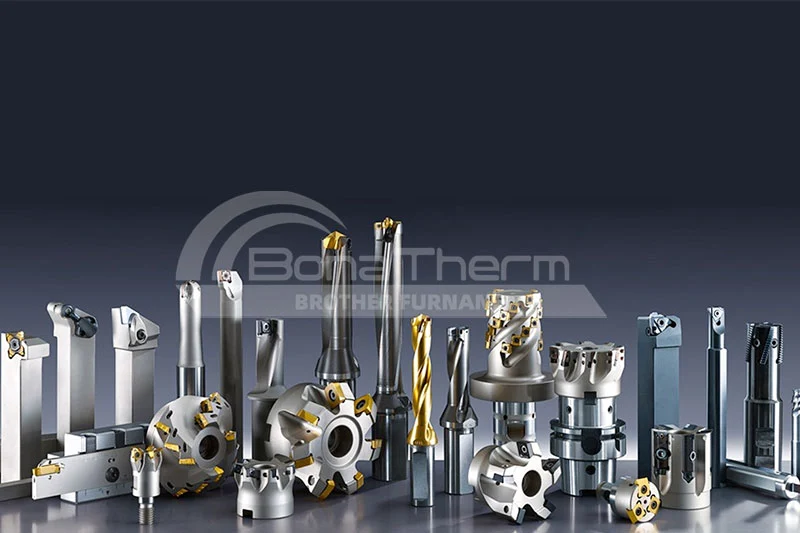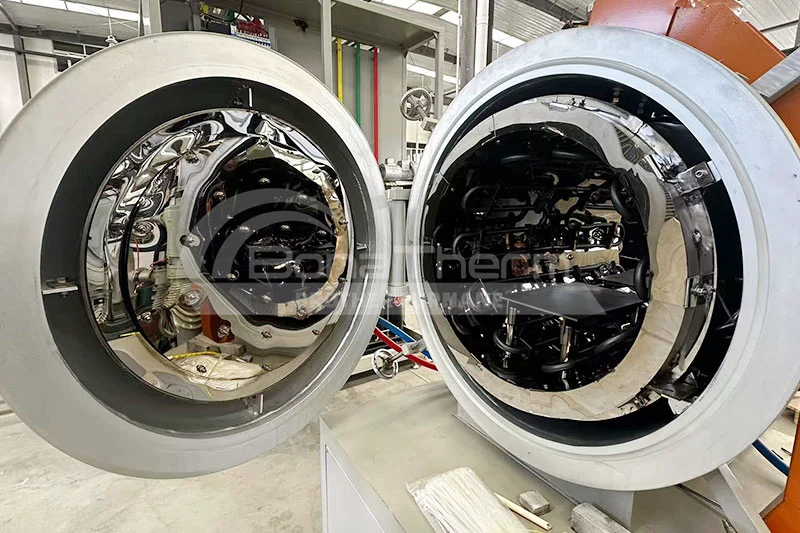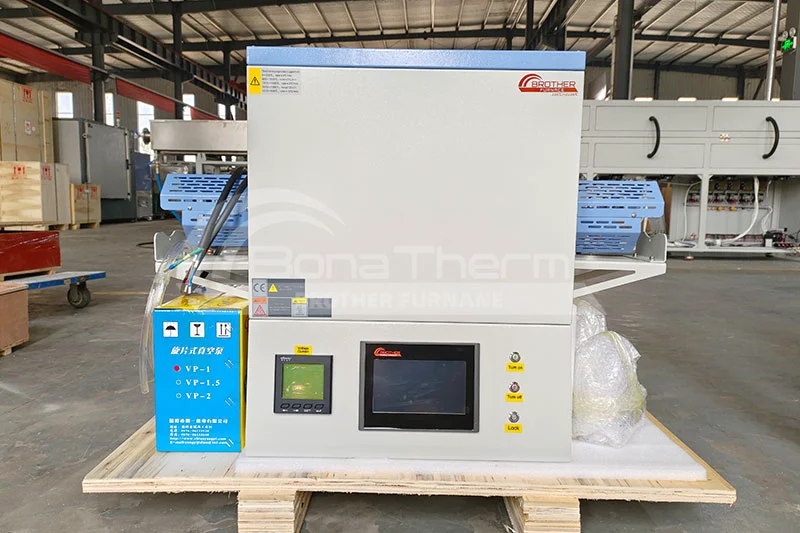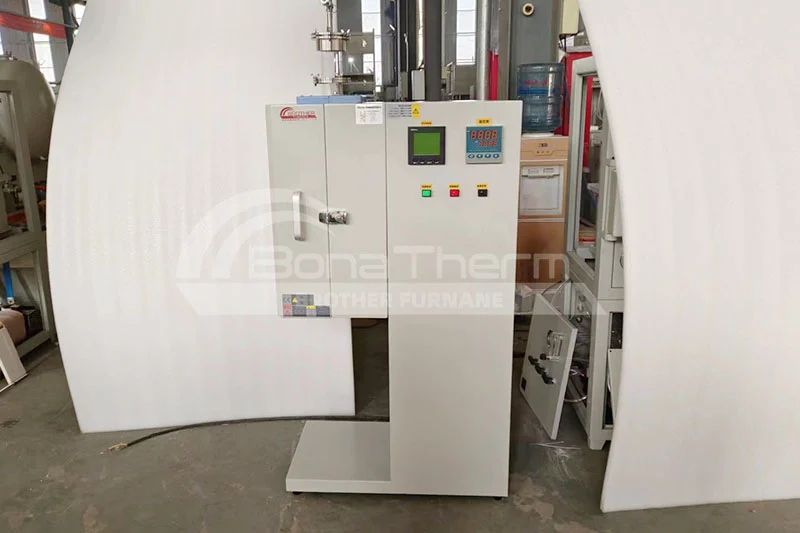How Vacuum Brazing Furnaces are Redefining the Limits of Stainless Steel Manufacturing
In manufacturing aerospace pipelines, medical devices, and nuclear equipment, the quality of the connections of stainless steel components directly determines the product's lifespan and safety. Traditional welding methods often lead to oxidation and deformation, while the vacuum brazing furnace, through its oxygen-free environment and precise temperature control, is becoming the preferred solution for high-precision stainless steel connections. This article will deeply analyze this process's core technologies and industry applications.

Principle of Stainless Steel Vacuum Brazing
Core Functions of the Vacuum Environment
Eliminating Oxides and Impurities: The vacuum environment effectively removes oxides, oils, and other contaminants from the metal surface, preventing the formation of new oxide layers during welding. This ensures the strength and corrosion resistance of the brazed joint.Reducing Porosity and Defects: Since there is almost no gas in the vacuum, moisture or oxygen from the air will not interfere with the brazing process. This significantly reduces the occurrence of porosity and other welding defects.
Uniform Heating: The vacuum brazing furnace uses an efficient heating system to ensure that stainless steel components are uniformly heated during the brazing process. This ensures the welding areas reach the desired temperature, avoiding localized overheating or underheating.
Improving Welding Quality: The controlled vacuum environment enhances the flow and wettability of the brazing material, promoting better fusion between the brazing material and stainless steel. This improves the strength, sealing, and corrosion resistance of the brazed joint.

Brazing Filler Metal Selection and Matching
Stainless Steel Type | Recommended Filler Metal | Melting Point Range (°C) | Application Scenarios |
|---|---|---|---|
304/316 Austenitic Steel | BAg-8 (Silver-based alloy) | 780-900 | Medical devices, food equipment |
Martensitic Stainless Steel | BNi-2 (Nickel-based alloy) | 970-1100 | Cutting tools, turbine components |
Duplex Stainless Steel | Cu-Mn-Co alloy | 950-1050 | Seawater desalination equipment, chemical pipelines |
Industry Application Cases
Aerospace Fuel Pipelines
Challenge: Thin-walled stainless steel pipes (0.3mm thickness) need to withstand 20MPa pressure, with a weld seam airtightness requirement of ≤ 1×10⁻⁹ Pa·m³/s.Solution: The vacuum brazing furnace uses BNi-5 filler metal along with a gradient cooling process to achieve zero porosity joints.
Implantable Medical Devices
Requirement: 316L stainless steel components for artificial joints must prevent nickel ion leaching (<0.1μg/cm²/week).Breakthrough: Ag-Cu-Ti active brazing filler metal is used to form a biocompatible interface layer in the vacuum environment, certified by ISO 10993.
New Energy Vehicle Battery Trays
Trend: 304 stainless steel battery enclosures brazed in a vacuum furnace replace traditional argon arc welding, reducing weight by 15% and increasing production efficiency by three times.Key Technological Breakthroughs in Vacuum Brazing Furnaces
Intelligent Control System
AI Temperature Prediction: Machine learning optimizes the heating curve, reducing energy consumption by 20% (e.g., IPSEN VDF series).Remote Monitoring: 5G modules transmit furnace pressure and temperature data in real time, with a fault diagnosis accuracy of 99%.
Composite Process Innovations
Brazing-Heat Treatment Integration: Brazing and solid solution treatment are completed in a single vacuum cycle, such as in the manufacture of aircraft engine blades.Local Vacuum Brazing: Mobile vacuum chamber technology has been developed for large components (e.g., nuclear reactor pressure vessels).

Future Trends
Biomimetic-Inspired Brazing Interface Design
The pearl layer of shells and the molecular structure of spider silk in nature may inspire the next generation of brazing technology. The vacuum brazing furnace may guide the brazing material to form multi-level interface structures similar to cell membranes in an oxygen-free environment, simulating biological self-assembly mechanisms. This biomimetic connection not only emphasizes strength but also focuses on the "flexibility" of energy transfer, enabling the brazed joint to dynamically respond to external stress changes, much like the symbiotic relationship between bones and tendons.The Cross-Disciplinary Dialogue Between Brazing and Space Science
As deep-space probes evolve, the logic of vacuum brazing technology is beginning to absorb the thinking of astrophysics – in near absolute vacuum environments, the material interaction laws may be vastly different from those recognized in terrestrial laboratories. The future may bring the concept of "space-grade vacuum brazing," exploring how to use the vacuum environment to achieve atomic-scale energy balance under extreme conditions such as microgravity and high radiation, providing technological reserves for self-healing structures of interstellar spacecraft.Conclusion
From precision medical devices to deep-space probes, stainless steel vacuum brazing technology is continuously evolving through the vacuum brazing furnace, breaking the physical limits of traditional manufacturing. Of course, if you have any needs for vacuum brazing furnaces, you can contact Brother Furnace. We have been dedicated to the vacuum furnace industry for many years and strive to assist you.





